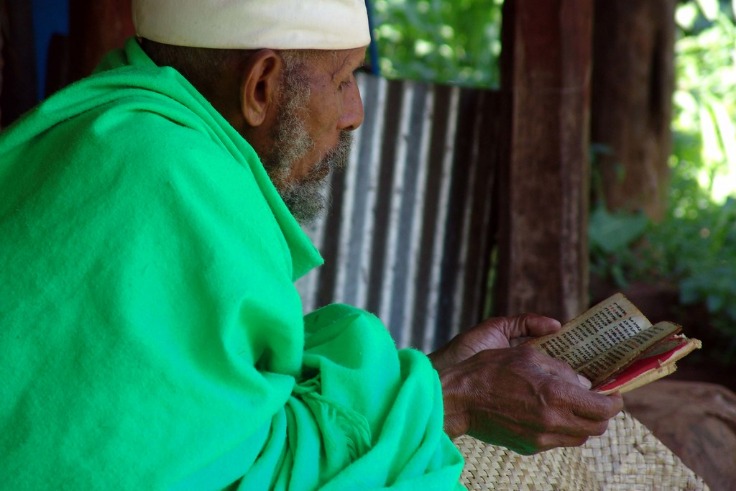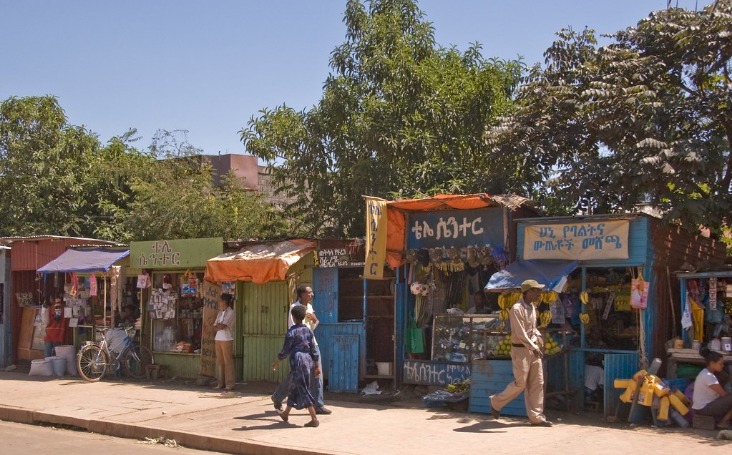Geographical and Environmental Overview
Bahir Dar, a vibrant city in Ethiopia, is renowned for its unique geographical and environmental features. Nestled near Lake Tana, the largest lake in the country, it is characterized by its lush landscapes, rich biodiversity, and strategic location along important waterways. The city’s environment is shaped by its proximity to water bodies, mountains, and fertile plains, which influence its climate, agriculture, and overall ecosystem. Understanding Bahir Dar’s geographical and environmental context is essential to appreciating its cultural significance and development potential.
Location and Topography
Bahir Dar is a vibrant city situated in the northwestern part of Ethiopia, serving as the capital of the Amhara Region. It is strategically located near the southern shore of Lake Tana, the largest lake in Ethiopia, which significantly influences the area’s climate and environment. The city is renowned for its scenic landscapes, including lush mountains, rolling hills, and expansive water bodies that create a picturesque setting. The topography of Bahir Dar features a combination of flat plains and gentle hills, providing diverse natural habitats and fertile lands that support agriculture and local livelihoods. The region’s geographical position near water bodies and elevated terrains contributes to a mild climate with distinct wet and dry seasons, fostering a rich and diverse environment.
Climate and Weather Patterns
Bahir Dar, situated in the northwestern part of Ethiopia, is a city characterized by diverse geographical features and a distinct climate that influences its environment and daily life.
The city is located near Lake Tana, the largest lake in Ethiopia, which plays a significant role in shaping the region’s landscape. The surrounding plains and rolling hills contribute to a varied topography that supports rich biodiversity and vibrant ecosystems.
Bahir Dar’s climate is classified as tropical highland, featuring moderate temperatures throughout the year, with distinct wet and dry seasons. The city benefits from its elevation, which helps keep temperatures relatively cooler compared to lower-altitude regions.
- Dry season: Typically runs from October to May, with lower humidity and minimal rainfall, making these months ideal for tourism and outdoor activities.
- Wet season: Usually occurs from June to September, characterized by heavy rainfall, thunderstorms, and increased humidity, which support agriculture and replenish water bodies.
- Temperature range: Generally fluctuates between 15°C (59°F) at night and 25°C (77°F) during the day, influenced by altitude and seasonal changes.
The diverse climate and geography of Bahir Dar foster fertile lands, lush vegetation, and abundant water resources, making it an important cultural and ecological hub in Ethiopia.
Natural Resources and Land Use
Bahir Dar, located in northwestern Ethiopia, is characterized by its diverse geographical and environmental features. Situated on the southern shores of Lake Tana, the largest lake in Ethiopia, it is surrounded by lush highlands and fertile plains that contribute to its rich natural landscape. The area’s climate is generally mild and humid, supporting a variety of flora and fauna. The proximity to Lake Tana and the Blue Nile River significantly influences the local environment, fostering biodiversity and vibrant ecosystems.
The region is endowed with abundant natural resources, including water bodies that provide opportunities for hydroelectric power and irrigation. Lake Tana and the Blue Nile play critical roles in the area’s water resource management, supporting agriculture, fisheries, and transportation. The land use in Bahir Dar is a mix of urban development, agriculture, and protected natural areas. Agriculture is prominent, with crops like maize, teff, and coffee cultivated in the surrounding highlands. Additionally, forestry and fishing are important economic activities, contributing to both local livelihoods and the regional economy.
Historical and Cultural Significance
Bahir Dar, a vibrant city nestled along the shores of Lake Tana in Ethiopia, holds immense historical and cultural significance. Known for its rich heritage, it serves as a gateway to ancient traditions, religious sites, and diverse cultural practices that have been preserved over centuries. The city’s unique blend of history and culture offers a fascinating glimpse into Ethiopia’s past and its ongoing cultural evolution.
Historical Background of Bahir Dar
Bahir Dar, located in northwestern Ethiopia, holds a rich historical and cultural significance as one of the country’s prominent cities. It serves as the capital of the Amhara region and is situated on the southern shore of Lake Tana, Ethiopia’s largest lake. Historically, Bahir Dar has been a crucial center for trade, religion, and regional administration for centuries. The city is known for its ancient monasteries on the islands of Lake Tana, some dating back to the 14th century, which are important religious sites and hold invaluable religious artifacts. Additionally, Bahir Dar is renowned for its vibrant cultural heritage, including traditional music, dance, and festivals that reflect the diverse Ethiopian culture. Its strategic location near the Blue Nile Falls also contributed to its historical importance as a hub for irrigation and transportation. Over the years, Bahir Dar has grown from a small town into a modern city while retaining its deep historical roots and cultural identity. Today, it continues to symbolize Ethiopia’s rich history and cultural diversity, attracting scholars, tourists, and devotees interested in its religious landmarks and natural beauty.
Cultural Heritage and Traditions
Bahir Dar, a vibrant city in Ethiopia, holds a deep historical and cultural significance rooted in its rich heritage and long-standing traditions. As a major hub in the region, it showcases a blend of historical monuments, linguistic diversity, and traditional practices that reflect its unique identity within Ethiopian culture.
- The city is renowned for its proximity to Lake Tana, the largest lake in Ethiopia, which is considered sacred and has numerous monasteries and religious sites of historical importance.
- Bahir Dar is home to the ancient and famous Blue Nile Falls, a natural wonder that has inspired local legends and holds symbolic importance in Ethiopian history.
- The region celebrates traditional festivals such as Timket, the Ethiopian Epiphany, which involves colorful processions, religious ceremonies, and community gatherings that preserve ancient customs.
- Local architecture, including the distinctive and colorful traditional houses, reflects Ethiopia’s diverse cultural influences and craftsmanship passed down through generations.
- Cultural heritage is also preserved through music and dance forms unique to the region, often performed during festivals and communal events that strengthen social bonds.
Languages and Ethnic Composition
Bahir Dar, a city in Ethiopia, holds significant historical and cultural importance as a center of regional development and cultural heritage. It is renowned for its historical sites, vibrant traditions, and as a hub of local art and music, reflecting the diverse identity of Ethiopia’s Blue Nile region.
The primary language spoken in Bahir Dar is Amharic, which is also the official language of Ethiopia. Additionally, other local languages such as Tigrinya and Oromo are commonly heard, indicating the region’s ethnic diversity. The city’s population comprises various ethnic groups, including the Amhara, who are the predominant community, along with Tigrayans, Oromos, and other ethnicities, contributing to a rich cultural mosaic that shapes Bahir Dar’s social landscape.
Economic Activities
Bahir Dar, a vibrant city in Ethiopia, is characterized by diverse economic activities that sustain its growth and development. From agriculture and trade to tourism and manufacturing, the city plays a crucial role in the regional economy. Its strategic location along Lake Tana and proximity to various natural and cultural resources make it a hub for various economic ventures. These activities not only benefit the local community but also contribute to Ethiopia’s overall economic progress.
Agriculture and Fishing
Bahir Dar, a vibrant city in Ethiopia, has a diverse economy with significant emphasis on agriculture and fishing. The region’s fertile lands and abundant water resources support various agricultural activities, including the cultivation of crops such as teff, maize, sorghum, and coffee. Farmers in the area benefit from irrigation techniques that enhance productivity and sustain their livelihoods. Fishing also plays a crucial role in Bahir Dar’s economy, given its proximity to Lake Tana, the largest lake in Ethiopia. Local fishermen depend on the lake for fish such as tilapia and barbus, which are vital for both local consumption and trade. These economic activities contribute to the overall development of Bahir Dar and improve the standard of living for its residents.
Tourism and Hospitality Industry
Bahir Dar, located in Ethiopia, is a vibrant hub of economic activities, tourism, and the hospitality industry. The city boasts a diverse economy anchored by agriculture, trade, and manufacturing sectors, which contribute significantly to its growth. Tourism plays a crucial role due to its proximity to Lake Tana, the largest lake in Ethiopia, renowned for its historic monasteries and scenic beauty. The hospitality industry in Bahir Dar has expanded rapidly to accommodate increasing numbers of tourists, with numerous hotels, restaurants, and tour operators providing high-quality services. This growth not only boosts the local economy but also promotes cultural exchange and sustainable development in the region.
Trade and Local Markets
Bahir Dar, a vibrant city in Ethiopia, plays a significant role in the country’s economic activities, trade, and local markets. It serves as a commercial hub in the region, facilitating the exchange of agricultural products, crafts, and imported goods.
The local economy is largely driven by agriculture, with farmers in surrounding areas producing coffee, maize, teff, and various vegetables that are traded in the city’s bustling markets. Bahir Dar’s markets are known for their lively atmosphere and diverse offerings, attracting both locals and traders from neighboring regions.
Trade in Bahir Dar is bolstered by its strategic location near Lake Tana and major transportation routes, which enhance the movement of goods such as fish, coffee, textiles, and handicrafts. The city also benefits from tourism, with markets selling traditional clothing, jewelry, and souvenirs related to the nearby historic sites and natural attractions.
Overall, Bahir Dar’s economic activities and markets are vital to the local and regional economy, supporting livelihoods and fostering cultural exchange through vibrant trade practices.
Tourist Attractions and Landmarks
Bahir Dar, a vibrant city in Ethiopia, is renowned for its stunning tourist attractions and historic landmarks. Visitors are captivated by its beautiful lakes, ancient monasteries, and impressive architectural sites. As a gateway to exploring Ethiopia’s rich cultural heritage, Bahir Dar offers a unique blend of natural beauty and historical significance that draws travelers from around the world.
Lake Tana and its Monasteries
Bahir Dar, located in Ethiopia, is renowned for its stunning natural beauty and historical significance, making it a popular destination for tourists. One of its most famous attractions is Lake Tana, the largest lake in Ethiopia and the source of the Blue Nile River. The lake is dotted with numerous islands, many of which host ancient monasteries that date back centuries. These monasteries, such as Ura Kidane Mehret and Debre Mariam, are notable for their well-preserved religious artifacts, traditional Ethiopian Christian architecture, and peaceful spiritual atmosphere. Visitors to Lake Tana and its monasteries can enjoy boat trips across the lake, explore historical sites, and experience the rich religious heritage that has been preserved over generations. The picturesque scenery, combined with the cultural and spiritual significance of the monasteries, makes Lake Tana a must-visit landmark in Bahir Dar.
The Blue Nile Falls
Bahir Dar, a vibrant city in Ethiopia, is renowned for its stunning natural attractions, including the famous Blue Nile Falls. Often called the “Grand Canyon of Africa,” the Blue Nile Falls is one of the most spectacular landmarks in the region. The waterfall, which plunges approximately 45 meters over a width of 1,500 meters, creates a breathtaking display of rushing water and mist that captivates visitors. Surrounded by lush greenery and vibrant rainforests, the falls are a UNESCO World Heritage Site and a must-see for travelers exploring Ethiopia. Visitors can enjoy boat rides to get closer to the falls, as well as panoramic views from nearby viewpoints. The Blue Nile Falls not only represents a natural wonder but also holds cultural significance, being an important part of Ethiopia’s history and the source of the Blue Nile River. Its majestic beauty makes it a highlight of Bahir Dar’s many tourist attractions.
Bahai Dar Botanical Garden
The Bahir Dar Botanical Garden is a renowned tourist attraction located in Bahir Dar, Ethiopia. Set along the shores of Lake Tana, the garden offers visitors a serene environment filled with diverse plant species, colorful flowers, and lush greenery. It is an ideal destination for nature lovers and those seeking a peaceful retreat within the city.
- Exotic Plant Species: The garden features a wide variety of indigenous and exotic plants, making it a perfect spot for botany enthusiasts.
- Scenic Views: Visitors can enjoy breathtaking views of Lake Tana and the surrounding landscapes while walking through the garden.
- Recreational Activities: The garden provides spaces for picnics, relaxing walks, and family outings, making it a popular spot for both locals and tourists.
- Wildlife Encounters: The lush environment attracts various bird species, offering excellent opportunities for birdwatching.
- Educational Value: The garden serves as an educational site where visitors can learn about local flora and conservation efforts.
Overall, Bahir Dar Botanical Garden is a must-visit landmark that showcases the natural beauty and rich biodiversity of Ethiopia, providing a memorable experience for all visitors.
Infrastructure and Urban Development
Bahir Dar, a prominent city in Ethiopia, has experienced significant growth through focused infrastructure and urban development initiatives. As a vital hub in the region, the city has seen advancements in transportation, water management, and public amenities, which are shaping its future as a sustainable and vibrant urban center. These developments play a crucial role in improving the quality of life for residents and fostering economic growth in the area.

Transportation and Connectivity
Bahir Dar, a vibrant city in Ethiopia, has seen significant advancements in infrastructure and urban development in recent years. The city boasts modern facilities, improved public services, and expanded urban spaces that cater to its growing population. Key projects include the development of new residential areas, commercial centers, and enhanced public amenities to support economic growth and improve residents’ quality of life.
Transportation and connectivity are vital for Bahir Dar’s development, serving as a hub for regional trade and tourism. The city is well-connected through a network of roads and highways that facilitate movement within the city and to neighboring regions. The expansion of transportation infrastructure, including the improvement of roads and the introduction of modern transport services, has significantly reduced travel time and increased accessibility. Additionally, efforts are underway to upgrade the local airport and boost lake connectivity through boat services, further strengthening Bahir Dar’s position as a key transportation node in Ethiopia.
Education and Healthcare Facilities
Bahir Dar, a vibrant city in Ethiopia, has seen significant advancements in infrastructure and urban development over recent years. The city boasts well-maintained roads, modern transportation systems, and reliable utilities that support the growing population. Additionally, urban planning initiatives have improved public spaces and environmental sustainability, making Bahir Dar an attractive place to live and work.
Education and healthcare facilities in Bahir Dar have also experienced notable improvements. The city is home to several reputable schools, colleges, and universities that provide quality education to residents. Healthcare infrastructure has expanded with well-equipped hospitals and clinics, ensuring accessible and efficient medical services. These developments contribute significantly to the overall well-being and development of the community in Bahir Dar.
Urban Planning and Modern Amenities
Bahir Dar, a vibrant city in Ethiopia, exemplifies modern infrastructure and urban development, blending traditional charm with contemporary amenities. The city’s urban planning has focused on sustainable growth, ensuring the integration of green spaces, efficient transportation systems, and reliable public services. Modern amenities such as advanced healthcare facilities, educational institutions, shopping centers, and recreational areas contribute to the high quality of life for residents. Efforts to improve infrastructure in Bahir Dar have also emphasized the development of reliable water supply, electricity, and internet connectivity, fostering economic growth and urban resilience. Overall, Bahir Dar’s strategic planning and commitment to modernization make it a noteworthy example of progressive urban development in Ethiopia.
Environmental and Sustainability Initiatives
Bahir Dar, a vibrant city in Ethiopia, is increasingly focusing on environmental and sustainability initiatives to promote a healthier and more sustainable future. As the city grows, efforts are being made to protect its natural resources, improve waste management, and promote renewable energy. These initiatives aim to balance development with environmental preservation, ensuring that Bahir Dar remains a beautiful and sustainable place to live for future generations.
Conservation Projects
Bahir Dar, a vibrant city in Ethiopia, is actively engaged in environmental and sustainability initiatives to protect its rich natural resources and improve the quality of life for its residents. The city has launched several conservation projects aimed at preserving Lake Tana, the largest freshwater lake in Ethiopia, which is vital for biodiversity, local livelihoods, and tourism. Efforts include promoting sustainable fishing practices, implementing waste management programs, and creating awareness campaigns to reduce pollution.
In addition, Bahir Dar has prioritized reforestation and afforestation projects to combat deforestation and soil erosion in surrounding areas. Community participation is encouraged to ensure the success of these initiatives, fostering a sense of responsibility among residents. Urban greening projects such as planting trees along streets and in public parks are also part of the city’s strategy to enhance air quality and provide green spaces for recreation.
Furthermore, Bahir Dar is dedicated to promoting renewable energy sources, with solar energy projects helping to reduce reliance on non-renewable power, thus minimizing environmental impact. These combined efforts highlight the city’s commitment to sustainable development, safeguarding its natural heritage for future generations while supporting economic growth.
Challenges of Urbanization
Bahir Dar, a vibrant city in Ethiopia, is experiencing rapid urbanization which presents both opportunities and challenges in terms of environmental and sustainability initiatives. As the city expands, it is crucial to implement effective strategies to minimize environmental degradation and promote sustainable development.
Urbanization in Bahir Dar has led to increased pollution, deforestation, and strain on natural resources such as water and land. Addressing these issues requires coordinated efforts to enhance waste management, promote the use of renewable energy, and conserve local ecosystems, including Lake Tana, the city’s most significant natural feature.
Challenges faced include limited infrastructure to support sustainable transportation, rising population density, and the need for policies that balance growth with environmental preservation. Overcoming these obstacles involves engaging stakeholders, adopting green building practices, and fostering community awareness about sustainability.
Initiatives such as tree planting campaigns, promoting eco-friendly tourism, and investing in renewable energy projects are essential steps for Bahir Dar to ensure a sustainable future. Collaboration between government bodies, local communities, and international organizations can help mitigate urbanization’s negative impacts and foster resilience in the city’s environmental systems.
Community Engagement and Awareness
Bahir Dar, a vibrant city in Ethiopia, has made significant strides in environmental and sustainability initiatives to preserve its natural beauty and promote eco-friendly development. The city has adopted various measures such as waste management programs, tree planting campaigns, and efforts to conserve Lake Tana, which is vital to the region’s ecosystem. Community involvement plays a key role, with local residents actively participating in environmental activities and awareness programs to foster a collective responsibility for sustainability. Educational campaigns aim to inform citizens about the importance of protecting natural resources, reducing pollution, and adopting sustainable practices. These initiatives not only enhance the city’s environmental health but also promote a culture of sustainability and community pride among the residents of Bahir Dar.





0 Comments